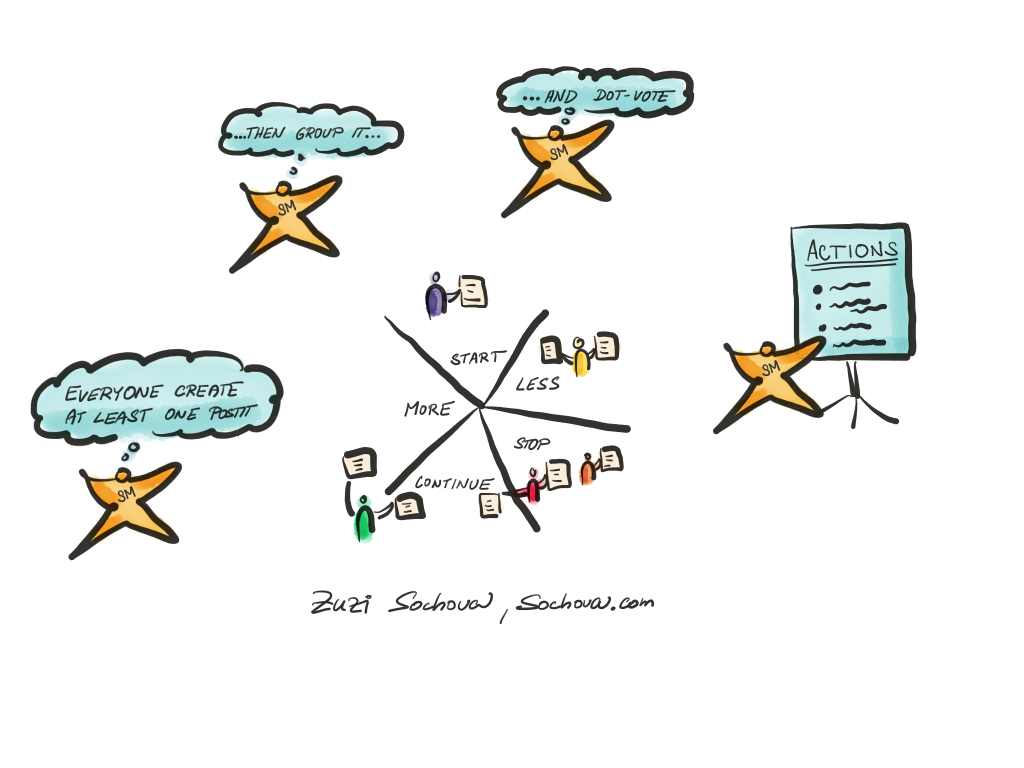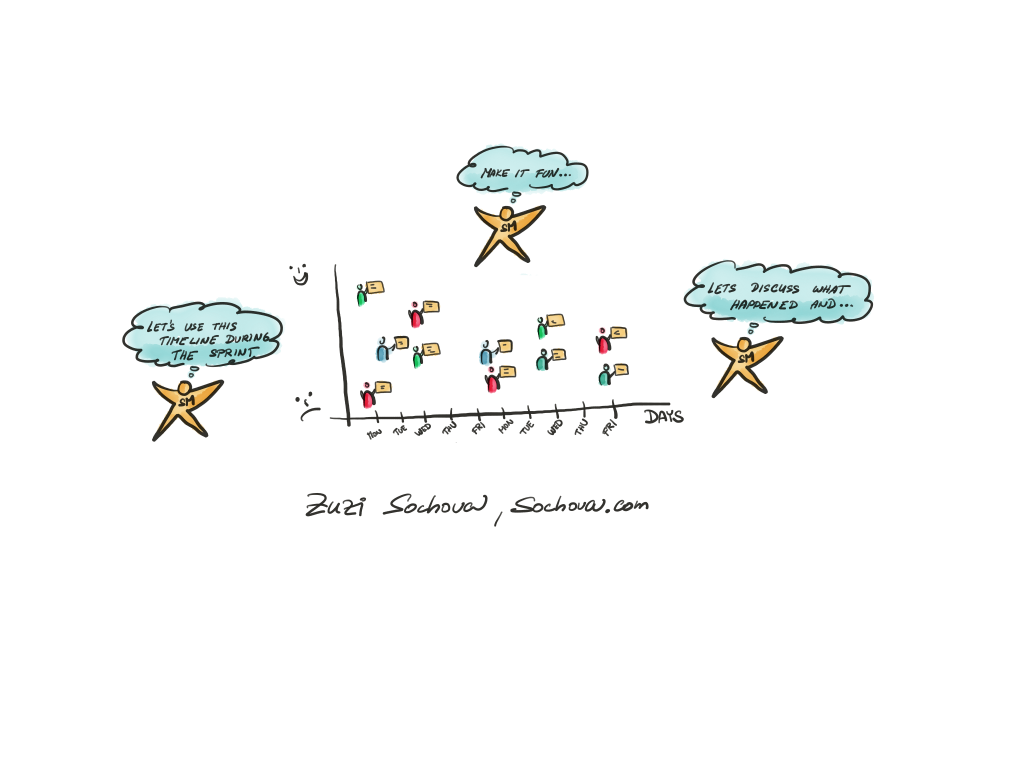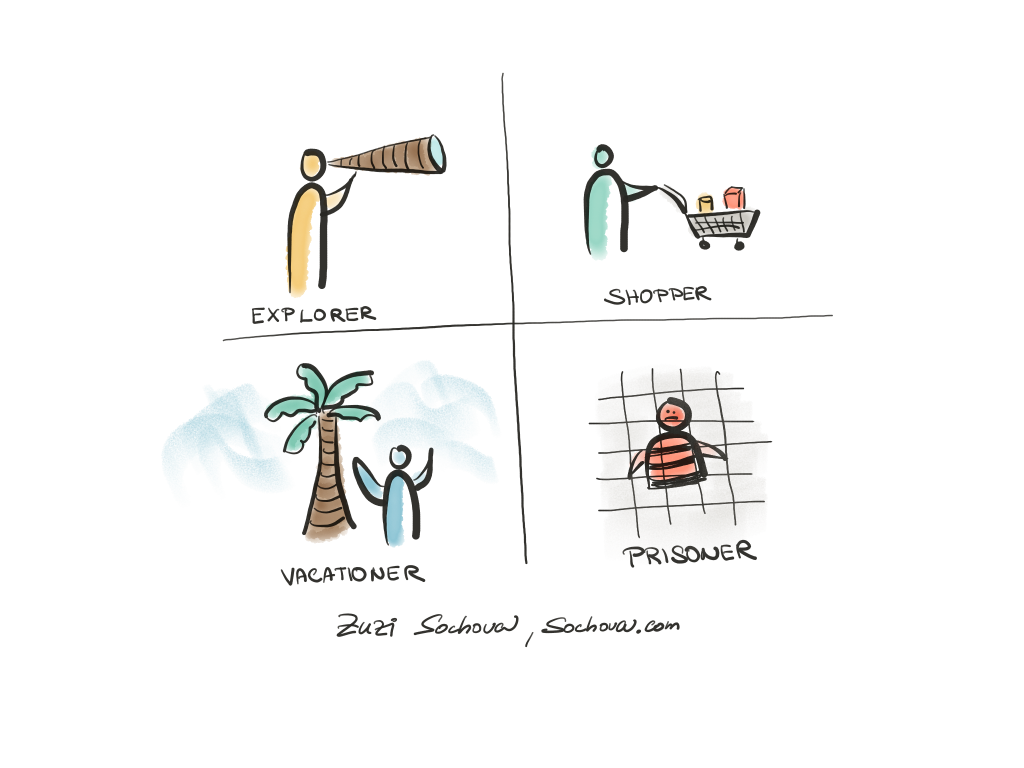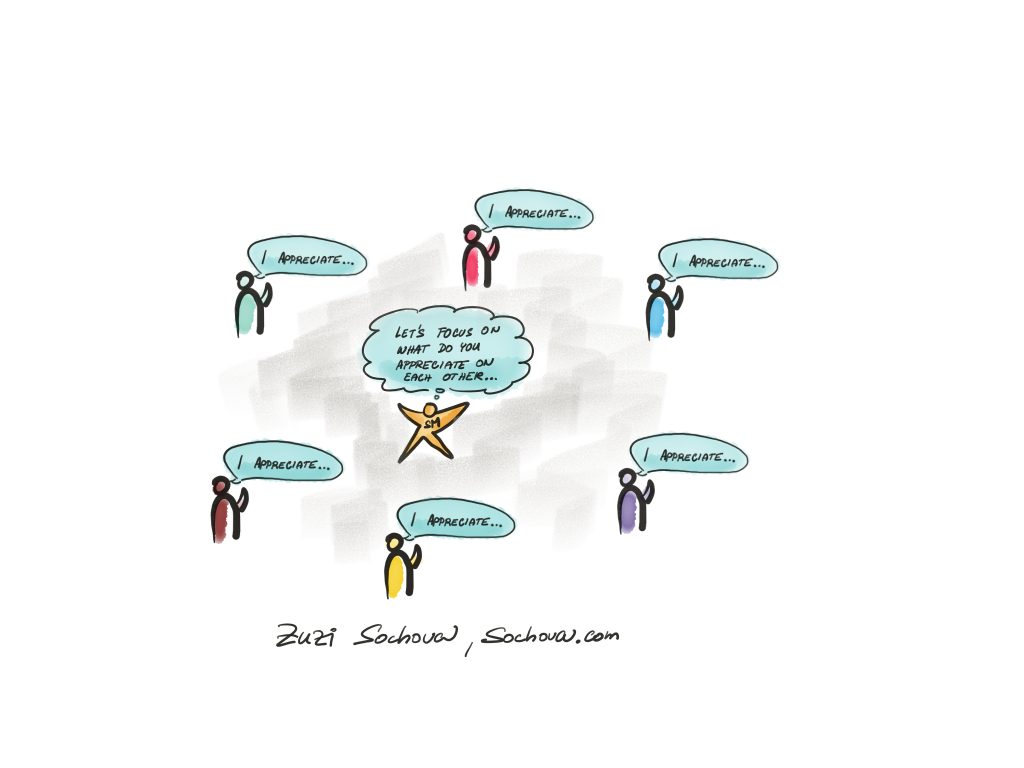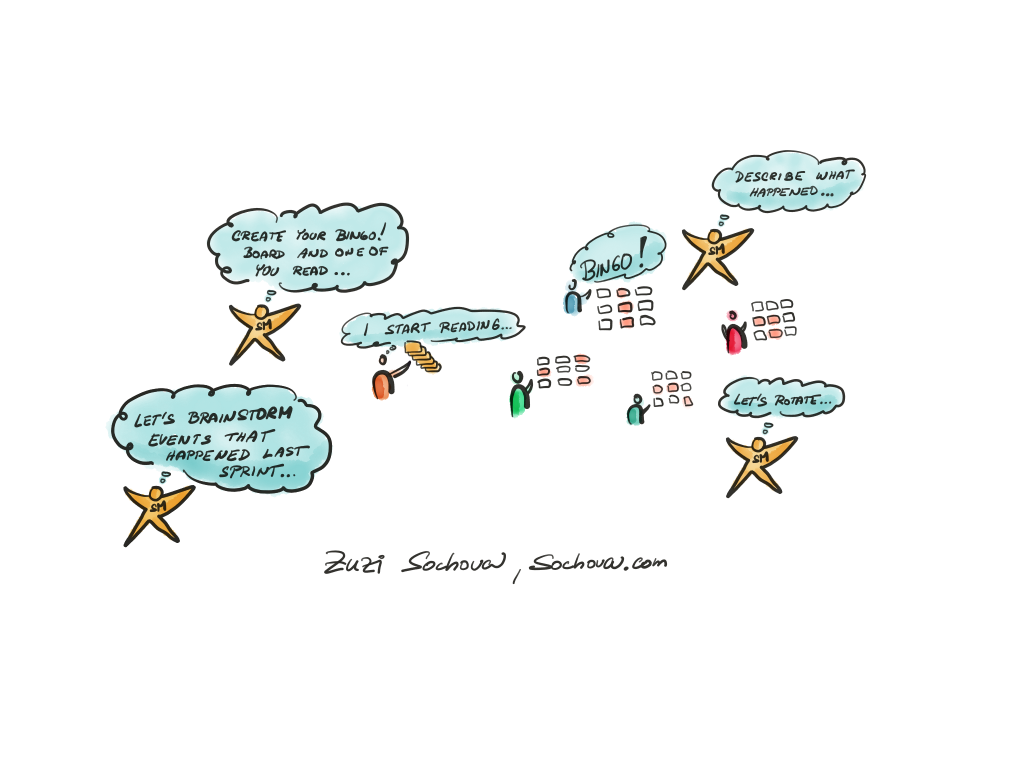There are so many books, blogs, and sites describing different retrospective formats, but it’s still one of the most common questions I get in the ScrumMaster classes. When I started as a ScrumMaster, I was only using one format...
There are so many books, blogs, and sites describing different retrospective formats, but it’s still one of the most common questions I get in the ScrumMaster classes.
When I started as a ScrumMaster, I was only using one format for about two years – and it worked. We got used to it and I learned how to facilitate it and generate meaningful improvements for the team. When I started coaching different organizations, I realized what variety is available and started practicing different formats. I guess that at that time I became more confident with my facilitation skills and stopped being afraid of experiments.
Don’t forget that the goal of a good retrospective is not to complain but to improve so you need to come up with an actionable improvement for the next Sprint. But let’s start with how structure of a good retrospective works. It’s common practice to do some check-in activity, for example by asking “If you are a weather, what kind of weather are you?” to get the focus of everyone. It doesn’t have to be long but it’s a good energizer. Then you explore the possibilities and gather the data so you can reflect. It usually generates too many ideas, so you need to narrow it down to the topics that are most important for the team i.e. grouping, dot voting, etc. Then you explore the most important topic looking for options “What can we do as a team so that this will never happen/improve”. When you generate several options let the team choose what they like to commit to. Too many actions usually don’t stick, and the team will not do them next Sprint, so don’t aim for too many. One improvement is better than many on a to-do list. If you like to get more details on the process check a talk I gave at several conferences.
Now once we summarized the goal and structure of a good retrospective, let’s have a look at my top ten formats.
Retrospective #1 – Plus and Delta
This retrospective format is the foundation most ScrumMasters start with. Team members take turns saying what they like, what they should continue with, and what they like to improve. It’s simple, everyone has a voice, and you don’t need much preparation.

Retrospective #2 – Star
Another popular retrospective format is called star where you expand the classic format of two questions into five segments and let the team look at the given Sprint from different angles – start, more, continue, less, stop. The team usually writes their suggestions on postits. This retrospective format broadens the perspective and usually generates more topics for the team. It is also easier to get the whole team involved as writing is often easier than having everyone speak.
Retrospective #3 – Speedboat
Once you’re bored with classic retrospective formats, try something more playful. I think the most classic is the speed boat metaphor. The wind in the sails represents what helps us, the anchors represent what is stopping us. And there is no limit to creativity in designing the picture. If you let the team design the picture, it will be even more fun. It encourages the team’s creativity and brings up topics that wouldn’t appear in regular retrospectives.
Retrospective #4 – Three Little Pigs
“Three Little Pigs” is a fairy tale about little pigs that build their houses from different materials. The first pig was lazy and built a straw house to play quickly. The second put a little more energy into building the house and quickly built a house out of sticks and ran off to play. The third worked all day and built a house of bricks. The next day, a wolf walked by, smelled a pig through the straw, and was already looking forward to dinner. He blew up the first house, and the little pig just barely managed to hide the second house, when the wolf broke the sticks with one blow the little pigs ran away to the brick house. When the wolf was unable to break it down, he decided to climb into it through the chimney. But the pigs were ready for that, prepare a pot of boiling water and the wolf never returned…
This retrospective uses the story as a metaphor and has the team compare their system and operation to a house made of straw, sticks, and bricks. This retrospective often helps the team identify longer-term stability, sustainability, and technical debt issues.
Retrospective #5 – Mad Sad Glad
This retrospective tries to look at the way of working through our feelings. Team members describe what makes them mad, sad, or glad. As with the previous formats, you can use postits or just let everyone talk. Not everything is rational and measurable, and it’s good to give space to feelings.
Retrospective #6 – Timeline
Sometimes the team tell you that they don’t remember everything that happened. In that case, you can try drawing a timeline and have them write down the events already during the Sprint. At the beginning of the retrospective, you revise such a timeline and let everyone remember what was happening when the note was written.
Retrospective #7 – ESVP: Explorer – Shopper – Vacationer – Prisoner
Sometimes it happens that the team doesn’t work properly, and they don’t want to participate in the retrospective. ESVP format looks at team dynamics and explore individual team member’s attitude. Explorers are ideal team members. They get involved, are active, come up with ideas, take responsibility. The shoppers are a bit more passive, but when they see something interesting, they get involved and ‘put it in their cart’. The vacationers are cool, glad they don’t need to work. They usually don’t get much involved but are not distracting either. The prisoners don’t want to be here and often are quite aggressive. They can poison the entire event.
At the beginning of the retrospective, let everyone where they are. When you find out that you have most people as prisoners, there is no point in continuing the classic retrospective. Instead, try to look for the root cause and how to help them get out of the prison.
Retrospective #8 – Appreciation
Positivity is the key. Research says that the well-functioning teams have a ratio of positive vs. negative events on average 5:1. Therefore in this retrospective, team members will appreciate the contribution of other team members.
Retrospective #9 – Road to the Beach
One of the more creative forms of retrospectives is based on children’s games. It can take many forms, for example, a trip to the beach representing a metaphor of a Sprint where individual members imagine the Sprint as a trip to the beach and begin to describe it. “On the way to the beach a storm comes,” says the first. And another team member continues: “On the way to the beach a storm came, and we got lost and didn’t know where to go.” And another team member repeats what those before him said and adds another event: “On the way to the beach a storm came, we got lost and we didn’t know where to go and the road was wet and muddy…” and so on. Every event in the journey to the beach is a metaphor for what happened in the Sprint. Sometimes the team needs a change, and this retrospective is fun. Everyone has to guess what each part of the way to the beach meant in reality and also be able to remember the whole story.
Retrospective #10 – Bingo!
This retrospective format is the most creative. Do you like playing Bingo? Well, that’s good news because you can play it with your team at the next retrospective. Together, the team brainstorms the events that happened within the Sprint either on cards or on an online board. When brainstorming on sticky notes, everyone must write down the same set of events. Everyone builds their own Bingo! board – the cards are the same, but everyone chooses the position of the individual cards themselves. One team member shuffles the cards and reads them one by one. The others mark what has already been said wait for “Bingo!”. The team member that got a Bingo! explains to the others how he experienced the mentioned events. Then the cards are shuffled again, and another person reads. It is a very playful form of retrospective, and it strengthens positivity in the team and shows different perspectives.
The post Top 10 Retrospective Formats first appeared on Agile and Scrum Blog.



